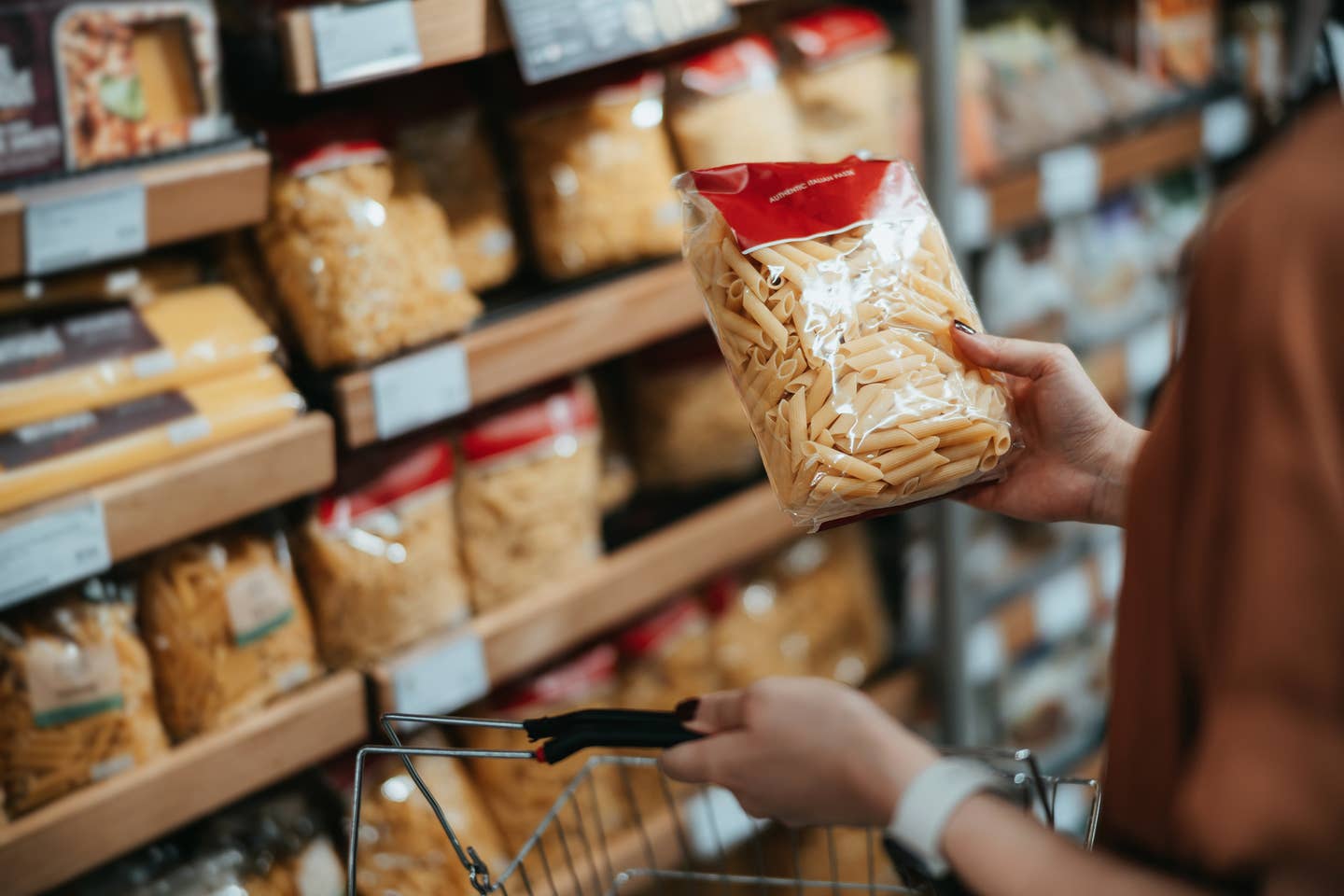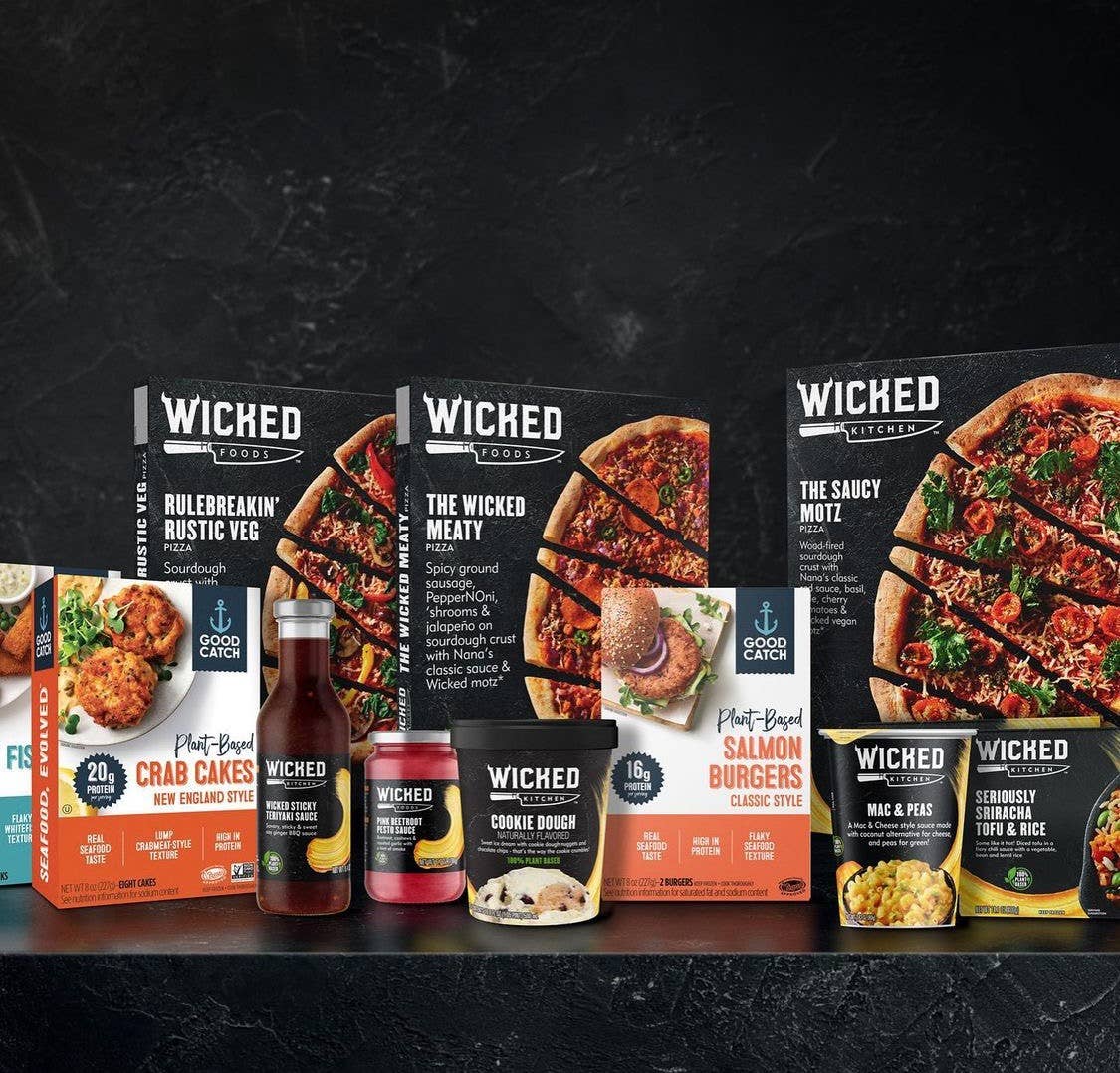
Bloomberg Predicts the Plant-Based Market Will Grow 450 Percent by 2030
A new report released by Bloomberg predicts that the plant-based food market will exceed $162 billion within the next decade, a multiple of more than 4 times the current size of nearly $30 billion. The publication attributes consumers growing concerns about sustainability and a preference for healthy foods as driving factors of the plant-based surge.
Bloomberg Intelligence (BI) issued the report entitled 'Plant-Based Foods Poised for Explosive Growth,' to showcase the steep rise of the plant-based market in recent years and to project the continuing growth trajectory. The report collected research and information from more than 2,000 companies across 135 industries in the global market. BI’s prediction would mean that the 2020 market valuation of $29.4 billion would increase by 451 percent.
“Food-related consumer habits often come and go as fads, but plant-based alternatives are here to stay – and grow,” BI’s Senior Consumer Staples Analyst Jennifer Bartashus said. “The expanding set of product options in the plant-based industry is contributing to plant alternatives becoming a long-term option for consumers around the world.”
Over the last year, several plant-based giants including Impossible Foods, Oatly, and Beyond Meat have solidified partnerships with international companies to increase accessibility to plant-based foods. The push to expand both manufacturing capabilities and distribution range is pushing the plant-based movement forward at an accelerated pace, helping popularize the vegan diet. As consumers become more concerned with the dangers of climate change and animal agriculture, plant-based diets are becoming more appealing.
“Restaurants and other food service companies will play a critical role in driving long-term trial and consumption of plant-based products,” the report states. “ Large restaurant chains–including Starbucks (which sell Oatly milk beverages), Burger King (home of the Impossible Whopper), and Del Taco and Taco Bell (both sell Beyond Meat products)–and others have played a critical role in advertising meu items and driving customer interest and trial orders. Restaurants are an easy venue to try a plant-based meat or dairy product and can influence shopping for at-home consumption.”
BI’s report detailed specific spikes within the plant-based market among different vegan categories. Vegan dairy is slated to take up 10 percent of its global market shares within the next decade. Beyond dairy, the report goes on to claim that the alternative meat market could surge from $4.2 billion to 74 billion in the next decade. The impressive growth is only BI’s more moderate prediction. Another more aggressive scenario suggests that the plant-based meat market could exceed $74 billion to $118 billion by 2030.
The vegan meat market’s sharp growth can be attributed to plant-based protein companies’ expansive efforts to develop and distribute these new products. Companies such as Beyond Meat have taken strides to maximize their products’ range, giving people worldwide an opportunity to try a plant-based protein over conventional animal-based meat.
With increasing concerns regarding sustainability and population growth, plant-based companies are working to provide a more sustainable option that’s healthier for the planet and the consumer. Beyond Meat’s CEO Ethan Brown is working to create a new form of the supply chain that will boost the production and distribution of his company and the plant-based market.
“Specific investments and activities include: the establishment of more localize production with closer proximity to our highest priority markets; more integrated end-to-end production processes across a greater proportion of our manufacturing network; scale-driven efficiencies in procurement and fixed-cost absorption; further diversification of our core protein ingredient supply chain; continued improvements in throughput across our manufacturing network; certain product and process innovations reformulations; and packaging optimization,” Brown said in May during an Earnings Call, laying out his plans for the company’s betterment.
With the climate crisis nearing the breaking point, attention has been directed towards animal agriculture. The newest UN report found that animal agriculture presents a significant danger to the planet and everyone who lives on it, being tied directly to the rising global temperatures and subsequent natural disasters. The production of meat and dairy products was found to require a substantially higher level of land and water than plant-based food production, presenting a clear danger to the environment and food supply.
A study in 2018 from Elementa: Science of the Anthropocene concluded that total global food production currently provides enough calories to feed 9.7 billion people, which is the size that the 2050 population is predicted to grow to. Nearly 34 percent of global crop production is funneled into animal agriculture for dairy and meat production, however, so cutting back on animal products will allow farmers to feed the worlds' population and do so more sustainably.
With rising awareness of the climate impact of animal agriculture and especially the meat industry, Bloomberg Intelligence concluded that consumers will continue to convert to more plant-based diets.
Top 10 Sources of Plant-Based Protein According to a Nutritionist
1. Seitan
Protein: 21 grams in ⅓ cup (1 ounce) Seitan isn’t as popular as other proteins, but it should be! Made from wheat gluten, its texture resembles ground meat. It’s often used in pre-made veggie burgers or meatless nuggets. Seitan has a savory taste, like mushrooms or chicken, so it works well in dishes that call for an umami flavor. With a hearty texture, seitan can be the star of practically any vegan main dish. Add it to stir-fries, sandwiches, burritos, burgers, or stews. Like tofu, seitan will take on the flavor of any marinade or sauce.
2. Tempeh
Protein: 16 grams in 3 ounces If you like a protein with a bit of bite, add tempeh to your list. Made from fermented soybeans, tempeh has a slightly nutty flavor and is pressed into a block. Most varieties include some sort of grains, such as barley or millet. Not only is tempeh a plant-based source of protein, but the fermentation process also creates good-for-your-gut probiotics. You can cut tempeh right off the block and use it as the base for a sandwich or pan-fry it with some sauce. Or, crumble, heat, and make it the star of your next taco night.
3. Lentils
Protein: 13 grams in ½ cup cooked Lentils come in multiple varieties--red, yellow, green, brown, black. Regardless of the type lentils are small but mighty nutritional powerhouses. They pack a good amount of protein as well as iron, folate, and fiber. When cooked, brown lentils retain their texture and can be the base for a grain bowl or make a hearty substitute for ground meat in meatballs, lasagna, tacos or Bolognese. Red lentils are a bit softer and make a nice add-in for a hearty soup, chili, or stew.
4. Hemp Seeds
Protein: 10 grams in 3 tablespoons Hemp seeds are a tender and nutty seed, derived from the hemp plant. They contain good amounts of omega-3s, iron, folate, magnesium, phosphorus, and manganese. They are also a solid source of both soluble and insoluble fiber, which helps to keep your digestive tract healthy and humming. Because they pack a double whammy of protein and healthy fats, hemp seeds can help satisfy hunger, preventing those embarrassing stomach growls as you slog your way to your lunch break. Add them to your morning smoothie or sprinkle them on top of yogurt, oatmeal, or even a salad.
5. Tofu
Protein: 9 grams in 3 ounces (⅕ of a block) Made from coagulated soybeans, tofu is the most popular plant-based protein. Soy is one of the only meatless "complete" proteins, meaning that it contains all of the essential amino acids that the body can’t make but needs for muscle and immune function. With 15% of your daily calcium needs, tofu is also a good replacement for dairy.
6. Edamame
Protein: 9 grams of protein in ½ cup This sushi appetizer is a nutrient powerhouse, so eat it anytime. Edamame is really just another name for soybeans in their pods. Let’s list off some stats--a small ½-cup serving of edamame has 9 grams of protein, 15% of your daily vitamin C, 10% of your daily iron and 16% of your daily fiber. Keep a bag of edamame in your freezer to serve as a fun-to-eat side dish or opt for the shelled variety to toss into salads or a grain bowl.
7. Quinoa
Protein: 8 grams per cup (cooked) Quinoa is an ancient grain and since it's gluten-free a great choice for anyone avoiding gluten. Add it to your burger recipe to create filling texture, or instead of meat in your taco or burrito. Quinoa is among the healthiest foods on the planet, delivering phytonutrients that have anti-inflammatory qualities, so keep it in your pantry for any meal that needs a filling grain. Just remember to soak it and rinse before cooking to get rid of any bitter taste.
8. Black Beans
Protein: 7 grams in ½ cup (canned) Eating beans on the regular might as well be a prerequisite for a plant-based diet. Not only are canned black beans inexpensive, but they also contribute 10% of your daily iron and 25% of your daily fiber to your diet. For less than $1 a can, beans can be the star of tacos, quesadillas, salads, soups, burgers, or dips.
9. Amaranth
Protein: 6 grams in ⅔ cup (cooked) Chances are you’ve never cooked amaranth. But you should, since this tiny, gluten- free grain is packed with almost 30% of your daily fiber and 20% of your daily iron. Cook it like a traditional grain to yield a soft, porridge-like texture. Many people add amaranth to other a hot breakfast cereal mixture, like oats and quinoa. It also pops like popcorn. Toss it in a pot with some oil and wait for it to pop up into a nutritious snack.
10. Peas
Protein: 5 grams in ⅔ cup If peas were one of your most hated veggies as a kid, it’s time to give them another chance. These green beans are a great low-calorie protein to keep in your freezer. Sure, they don’t always taste great when steamed or microwaved (who wants to eat mushy, overcooked peas?), but they do blend well into a yummy puree that can be slathered on toast. To amp up the flavor, add some lemon juice or mint to your mix before you blend.
More From The Beet






